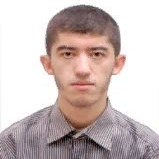
Abdelhak Bouhali
Work place: Lab. Signal & Communications, École Nationale Polytechnique, 10 Avenue Hassen Badi, BP 182, El-Harrach, Alger 16200, Algérie
E-mail: abdelhak.bouhali@g.enp.edu.dz
Website:
Research Interests: Analysis of Algorithms, Image Processing, Computer systems and computational processes
Biography
Abdelhak Bouhali was born in Seddouk (Béjaïa), Algeria, in 1989. He received the Licence degree in Electronic Engineering from the University of Béjaïa, Algeria, in 2010, and the Master degree in Aeronautical Sciences from the Institute of Aeronautics of Blida, Algeria, in 2012. Since January 2013, he was a graduate student pursuing the Ph.D. degree in the department of Electronics at Ecole Nationale Polytechnique of Algiers, Algeria. His research interest includes image processing and multi-resolution analysis.
Author Articles
Combination of Spatial Filtering and Adaptive Wavelet Thresholding for Image Denoising
By Abdelhak Bouhali Daoud Berkani
DOI: https://doi.org/10.5815/ijigsp.2017.05.02, Pub. Date: 8 May 2017
Thresholding in wavelet domain has proven very high performances in image denoising and particularly for homogeneous ones. Conversely, and in cases of relatively non-homogeneous scenes, it often induces the loss of some true coefficients; inducing so, to smoothing the details and the different features of the thresholded image. Therefore, and in order to overcome this shortcoming, we introduce within this paper a new alternative made by a combination of advantages of both spatial filtering and wavelet thresholding; that ensures well removing the noise effect while preserving the different features of the considered image. First, the degraded image is decomposed into wavelet coefficients via a 2-level 2D-DWT. Then, the finest detail sub-bands likely due to noise, are thresholded in order to maximally cancel the noise contribution. The remaining noise shared across the coarse detail subbands (LH2, HL2, and HH2) is cleaned by filtering these mentioned sub-bands via an adaptive wiener filter instead of thresholding them; avoiding so smoothing the acquired image. Finally, a joint bilateral filter (JBF) is applied to ensure the preservation of the different image features. Experimental results show notable performances of our new proposed scheme compared to the recent state-of-the-art schemes visually and in terms of (MSE), (PSNR) and correlation coefficient.
[...] Read more.Other Articles
Subscribe to receive issue release notifications and newsletters from MECS Press journals